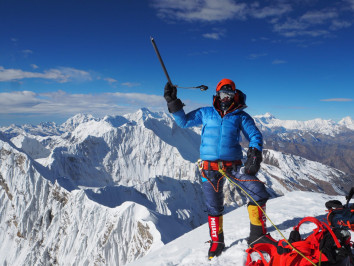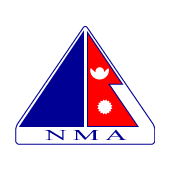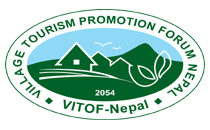Altitude Sickness in the Nepali Himalayas: Your Ultimate Survival Guide

 Kedar Neupane
10th Nov, 2025
Kedar Neupane
10th Nov, 2025
Kedar Neupane
I am Kedar Neupane, a passionate traveler, entrepreneur, mentor, and social contributor, born and raised in a village near the Nepal-China border in Sindhupalchok, Nepal. With a Master’s degree in Business from Tribhuvan University and Level 2 proficiency in the German language, I have dedicated my life to tourism, trade, mentorship, and holistic well-being.
🌍 A Global Explorer with a Vision
Having explored 26+ countries, I have gained profound insights into diverse cultures, business landscapes, and global tourism. My travels have taken me to:
🇹🇭 Thailand | 🇧🇹 Bhutan | 🇲🇾 Malaysia | 🇸🇬 Singapore | 🇨🇳 China | 🇭🇰 Hong Kong | 🇩🇪 Germany | 🇵🇱 Poland | 🇦🇹 Austria | 🇨🇭 Switzerland | 🇭🇺 Hungary | 🇳🇱 Netherlands | 🇧🇪 Belgium | 🇫🇷 France | 🇦🇪 UAE | 🇬🇧 UK | 🇺🇸 USA | 🇹🇷 Turkey | 🇶🇦 Qatar | 🇮🇳 India | 🇮🇩 Indonesia | 🇨🇦 Canada
Through my journeys, I have developed a deep appreciation for cultural exchange, adventure tourism, and sustainable business practices.
🏔️ Entrepreneurial & Professional Journey
I am actively involved in tourism, trade, and mentorship, leading multiple ventures that promote sustainable travel, adventure tourism, and business development:
✔ Founder & MD – Actual Adventure Pvt. Ltd. (A leading adventure travel company in Nepal)
✔ CEO – Himalayas Destination Management Company (Creating premium travel experiences)
✔ MD – Nepal Export & Import Pvt. Ltd. (Promoting Nepalese products globally)
✔ MD – Actual Mentor Pvt. Ltd. (Empowering entrepreneurs and professionals)
✔ Chairman – World Expedition Nepal (Focusing on high-altitude expeditions and trekking)
Through my entrepreneurial journey, social contributions, global explorations, and commitment to lifelong learning, I strive to inspire others to pursue their passions while making a meaningful difference. My dream is to build a world where travel, business, and holistic well-being come together, fostering growth, sustainability, and happiness for all.
Trekking in the majestic Nepali Himalayas is a dream for every adventure lover. From the Everest Base Camp Trek to the Annapurna Circuit and Manaslu Trail, Nepal offers breathtaking high-altitude experiences. But with great altitude comes a great challenge — Altitude Sickness (also known as Acute Mountain Sickness or AMS).
Table of Contents
What is Altitude Sickness?
Altitude sickness happens when your body doesn’t get enough oxygen due to a quick ascent to high elevations. As you climb higher, air pressure and oxygen levels drop. In Nepal, trekkers start feeling symptoms above 2,500 meters (8,200 ft), with risks increasing sharply above 3,000 meters (9,800 ft).
Types of Altitude Illness
1. Acute Mountain Sickness (AMS)
- Headache
- Dizziness or lightheadedness
- Nausea or vomiting
- Fatigue or loss of appetite
- Difficulty sleeping
2. High Altitude Pulmonary Edema (HAPE)
- Shortness of breath even at rest
- Persistent cough with frothy sputum
- Chest tightness
- Severe weakness or fatigue
3. High Altitude Cerebral Edema (HACE)
- Severe headache
- Confusion or disorientation
- Loss of coordination
- Hallucinations or unconsciousness
Where You’re Most at Risk in Nepal
| Trekking Region | Highest Point | Risk Zone |
|---|---|---|
| Everest Base Camp Trek | 5,364m | Namche (3,440m), Dingboche (4,410m), Lobuche (4,910m) |
| Annapurna Circuit Trek | 5,416m (Thorong La) | Manang (3,519m), Thorong Phedi (4,450m) |
| Manaslu Circuit Trek | 5,160m | Samagaon (3,530m), Larkya Phedi (4,470m) |
| Langtang Valley Trek | 4,984m | Kyanjin Gompa (3,870m) |
| Upper Mustang Trek | 4,200m | Lo Manthang (3,840m) |
How to Prevent Altitude Sickness
- Ascend Slowly: Don’t climb more than 300–500m per day above 3,000m. Take acclimatization days.
- Stay Hydrated: Drink 3–4 liters of water daily. Avoid alcohol, caffeine, and smoking.
- Eat Well: Choose light, high-carb meals for better oxygen use.
- Climb High, Sleep Low: Trek to a higher point but sleep at a lower elevation.
- Medication: Consult your doctor about Diamox (Acetazolamide) before trekking.
- Recognize Symptoms Early: Stop ascending if symptoms persist.
What to Do If You Get Altitude Sickness
If symptoms are mild, rest for 24–48 hours, hydrate well, and take medication. If symptoms worsen, descend immediately by at least 500–1,000 meters.
For serious cases, helicopter evacuation is the safest and quickest solution. Ensure your travel insurance covers high-altitude rescue in Nepal.
Essential Altitude First-Aid Kit
- Diamox (Acetazolamide)
- Dexamethasone (for HACE)
- Nifedipine (for HAPE)
- Portable oxygen or oxygen bag
- Pulse oximeter
- Painkillers (Ibuprofen/Paracetamol)
- Oral rehydration salts
Helicopter Evacuation Services in Nepal
In case of severe AMS, you can contact or your trekking agency for emergency evacuation from:
- Everest Base Camp / Gorak Shep
- Dingboche / Pheriche
- Manang / Thorong Phedi
- Samagaon (Manaslu Region)
- Lo Manthang (Upper Mustang)
Best Seasons to Avoid AMS Risk
| Season | Months | Advantages |
|---|---|---|
| Spring | March–May | Warm weather, good acclimatization conditions |
| Autumn | September–November | Stable weather, clear skies, ideal trekking season |
| Winter | December–February | Cold and dry; AMS risk slightly higher |
| Monsoon | June–August | High humidity, fewer trekkers |
Altitude Sickness in Nepal While Trekking
Trekking in Nepal is one of the world’s most inspiring adventures — from the Everest Base Camp to the Annapurna Circuit, Langtang Valley, and Manaslu Circuit. The snow-clad peaks, cultural villages, and spiritual landscapes make Nepal a paradise for trekkers.
However, when you head above 2,500 meters, you also enter the zone where altitude sickness (also called Acute Mountain Sickness – AMS) becomes a real possibility.
Understanding altitude sickness, its symptoms, and prevention is essential for a safe and enjoyable Himalayan trek.
What Is Altitude Sickness?
Altitude sickness occurs when you ascend too quickly to high elevations where oxygen levels are lower. Your body needs time to adjust to the thinner air. If you climb too fast, your body doesn’t get enough oxygen, leading to headaches, dizziness, nausea, and fatigue.
Common Symptoms of Altitude Sickness
-
Headache
-
Loss of appetite
-
Nausea or vomiting
-
Tiredness or dizziness
-
Shortness of breath
-
Trouble sleeping
If ignored, AMS can worsen into serious forms like High-Altitude Pulmonary Edema (HAPE) or High-Altitude Cerebral Edema (HACE) — both can be life-threatening.
Where Altitude Sickness Commonly Occurs in Nepal
| Trekking Region | Highest Point | Altitude Risk Zone |
|---|---|---|
| Everest Base Camp Trek | 5,364 m | Namche Bazaar (3,440 m), Dingboche (4,410 m), Lobuche (4,910 m) |
| Annapurna Circuit Trek | 5,416 m | Manang (3,519 m), Thorong Phedi (4,450 m) |
| Manaslu Circuit Trek | 5,160 m | Samagaon (3,530 m), Larkya Phedi (4,470 m) |
| Langtang Valley Trek | 4,984 m | Kyanjin Gompa (3,870 m) |
| Upper Mustang Trek | 4,200 m | Lo Manthang (3,840 m) |
Even physically fit trekkers can experience AMS if they ascend too quickly.
How to Prevent Altitude Sickness While Trekking
-
Ascend Gradually
-
Don’t climb more than 300–500 m per day after 3,000 m.
-
Include acclimatization days (for example in Namche Bazaar or Manang).
-
-
Stay Hydrated
-
Drink at least 3–4 litres of water daily.
-
Avoid alcohol, caffeine, and smoking.
-
-
Eat High-Carbohydrate Meals
-
Carbs provide more energy and help your body use oxygen efficiently.
-
-
Climb High, Sleep Low
-
Trek to a higher point during the day, but descend to sleep at a lower elevation.
-
-
Use Medication if Recommended
-
Diamox (Acetazolamide) can help prevent AMS. Consult your doctor before using it.
-
-
Recognize Symptoms Early
-
Don’t ignore headaches or nausea — stop ascending and rest.
-
What to Do If You Get Altitude Sickness
-
Mild Symptoms:
Rest for 24–48 hours, stay hydrated, and take mild medication. -
Severe Symptoms:
Descend immediately by 500–1,000 m and seek medical help.
If you are in remote regions such as Everest or Annapurna, helicopter evacuation may be necessary.
Contact reliable services such as Actual Adventure Pvt. Ltd. or Nepal Chopper Service for emergency rescue coordination.
Essential Items for Altitude Safety
-
Diamox (Acetazolamide)
-
Dexamethasone (for HACE)
-
Nifedipine (for HAPE)
-
Portable oxygen or oxygen cylinder
-
Painkillers and rehydration salts
-
Pulse oximeter
Helicopter Evacuation in Nepal
Helicopter rescue is available from all major trekking regions including:
-
Everest Base Camp, Gorak Shep, Dingboche
-
Manang and Thorong Phedi
-
Samagaon (Manaslu Region)
-
Lo Manthang (Upper Mustang)
Always ensure your travel insurance covers high-altitude evacuation.
Best Time to Trek in Nepal to Avoid AMS
| Season | Months | Highlights |
|---|---|---|
| Spring | March – May | Moderate weather, best for acclimatization |
| Autumn | September – November | Clear skies, stable conditions |
| Winter | December – February | Cold, thinner air — acclimatize carefully |
| Monsoon | June – August | Fewer trekkers, but trails are slippery |
Final Advice: Listen to Your Body
Altitude sickness can affect anyone. The key to prevention is patience and awareness.
Move slowly, stay hydrated, eat well, and never ignore symptoms.
If treated early, AMS is easily manageable and you can safely continue your trek.
Plan a Safe Trek in Nepal
For well-organized, safe, and professionally guided trekking packages in Nepal — including Everest Base Camp, Annapurna Base Camp, and Manaslu Circuit — contact:
Final Words: Listen to Your Body
Altitude sickness isn’t a sign of weakness — it’s a sign that your body needs time. The golden rule for trekking in Nepal’s high altitudes is: “Go slowly, stay hydrated, and never ignore symptoms.” With proper acclimatization and preparation, you can safely enjoy the incredible views of the Himalayas and create memories that last a lifetime.
Plan Your Safe Trek with Experts
For safe, guided treks to the Himalayas, contact:
Actual Adventure Pvt. Ltd.
📍 Thamel, Kathmandu, Nepal
🌐 www.actual-adventure.com
📧 info@actual-adventure.com
📞 +977-9851012358 (WhatsApp/Viber)
Recent Posts

18th Nov, 2025

14th Nov, 2025
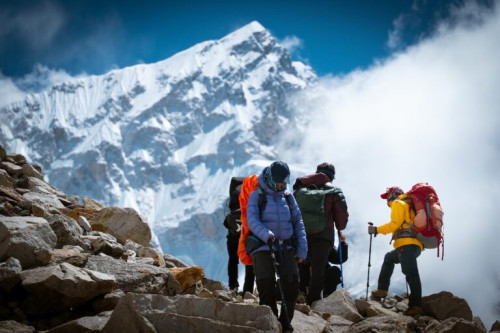
12th Nov, 2025
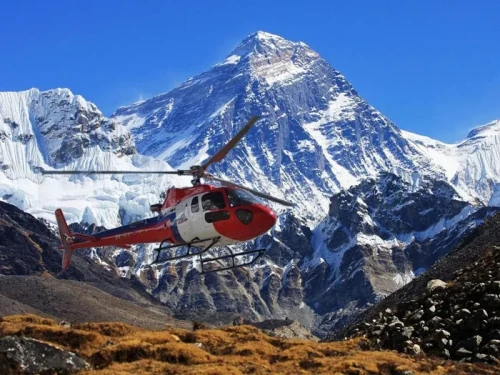
28th Oct, 2025

19th Oct, 2025

18th Oct, 2025

14th Oct, 2025

14th Oct, 2025
